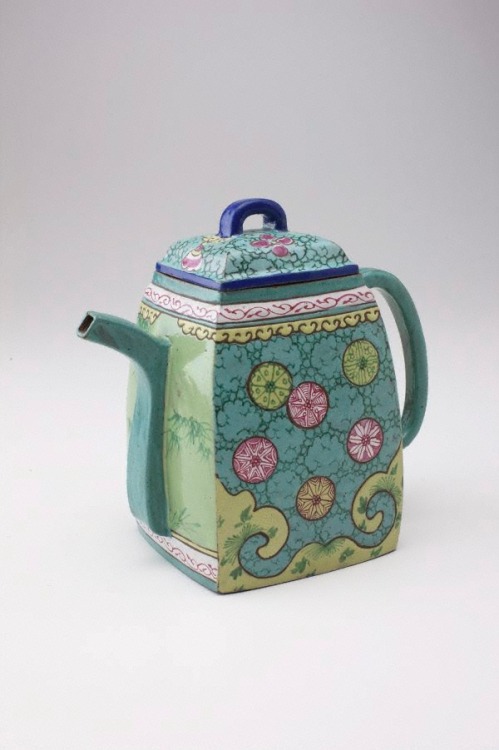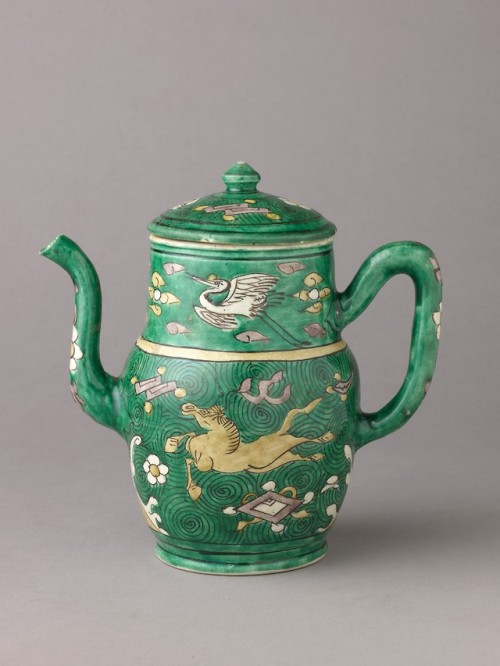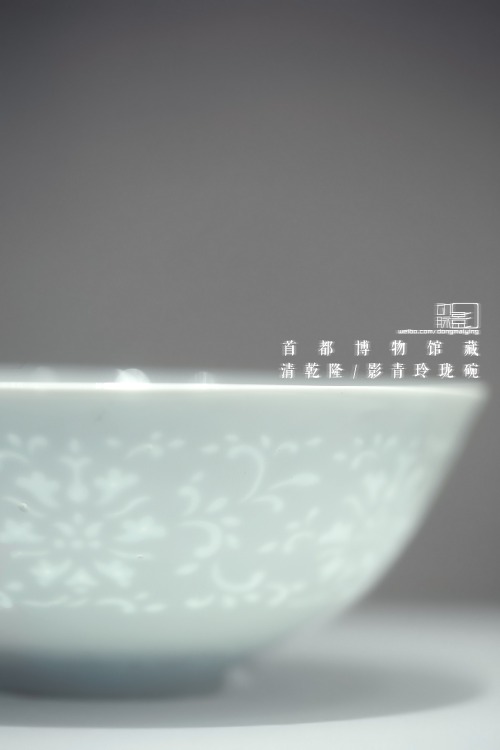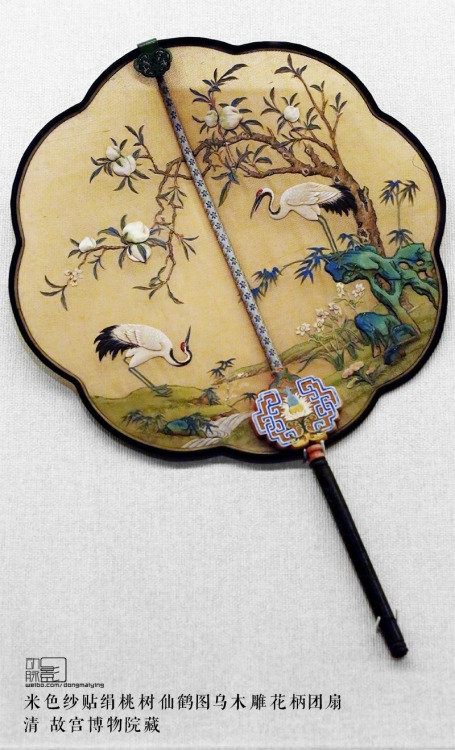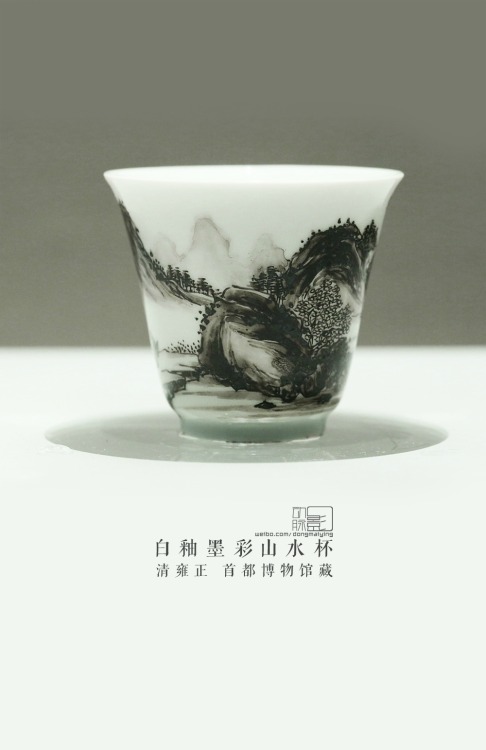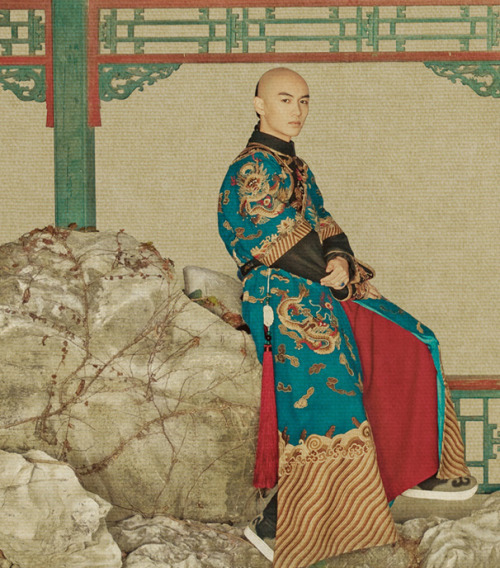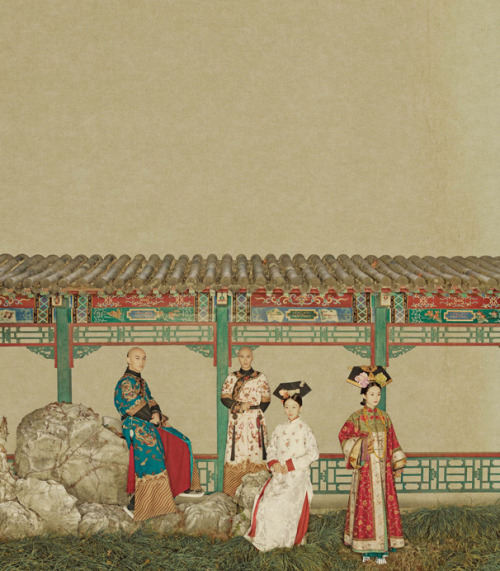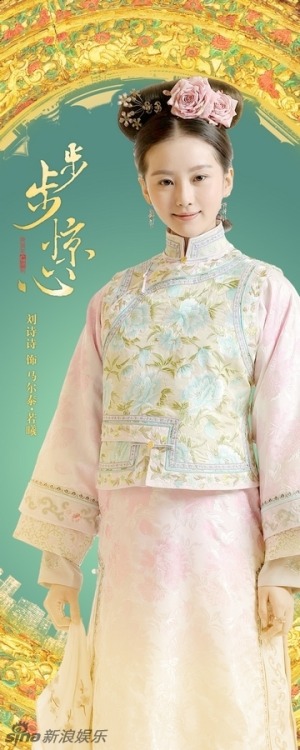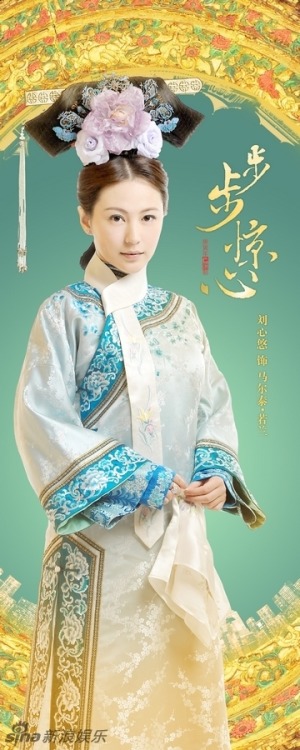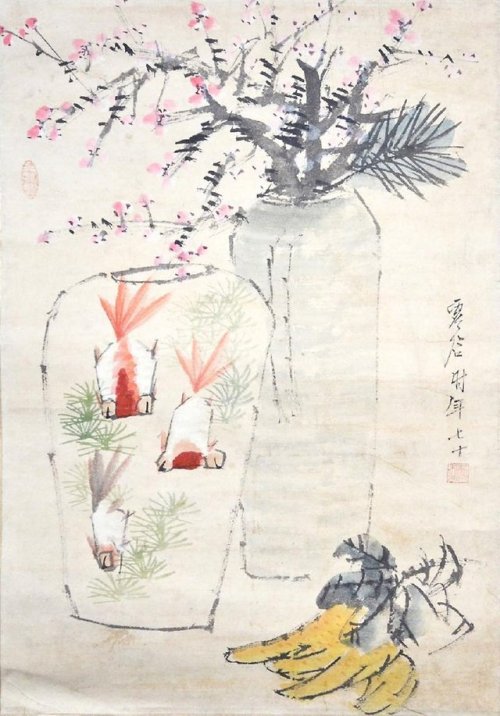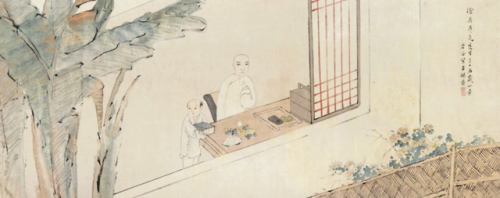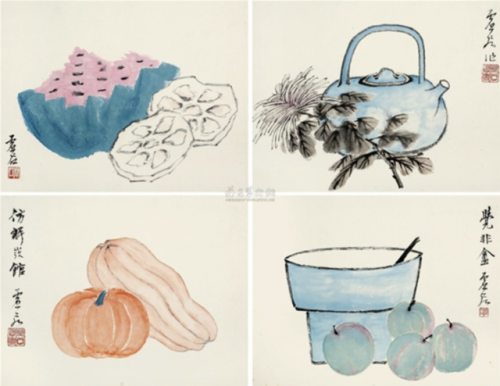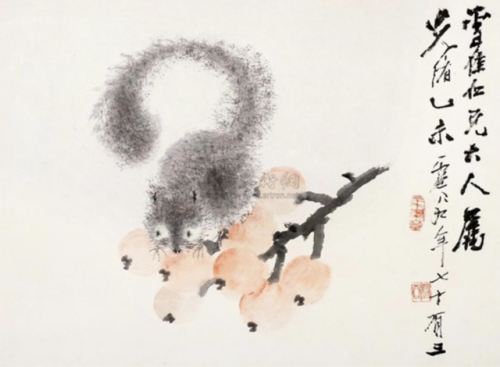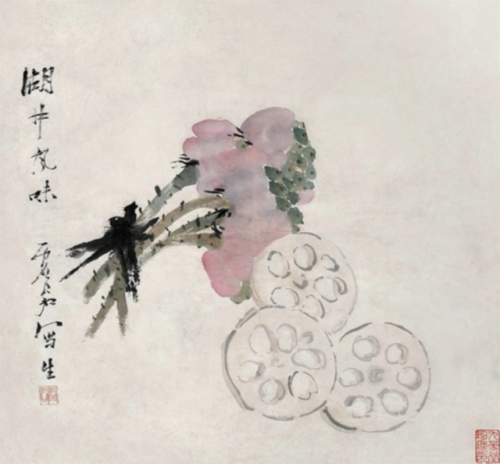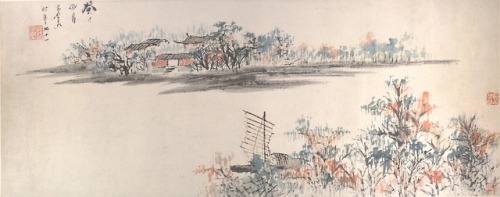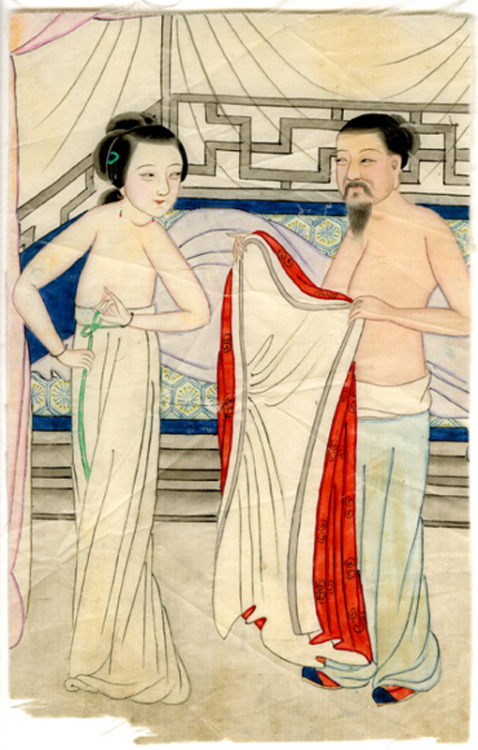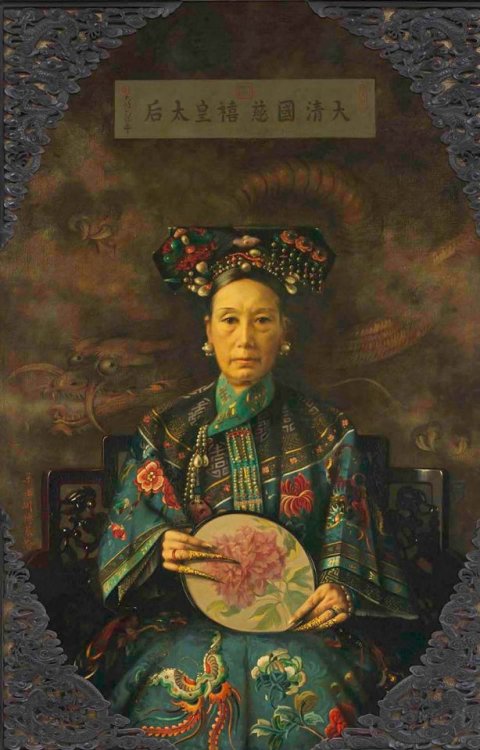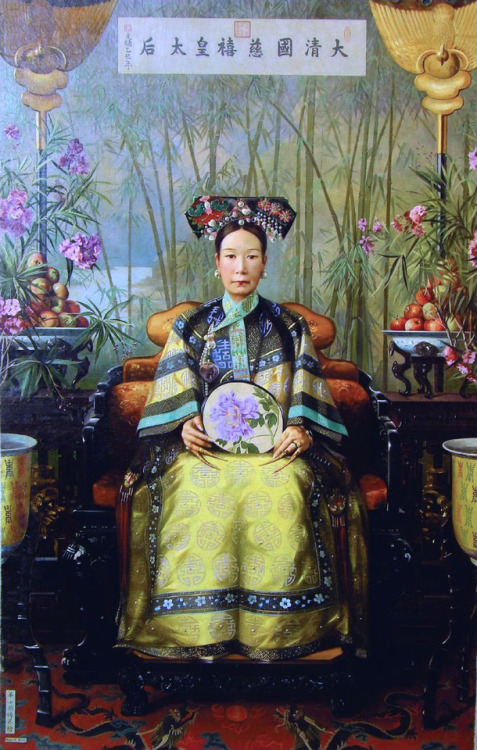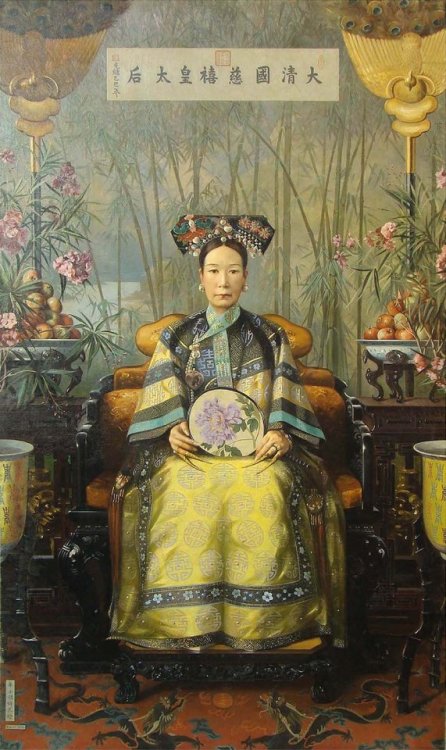#qing dynasty
Yixing ware. Ewer decorated with enamels, Qing Dynasty 1644-1911, Qianlong 1736 - 1795. Stoneware with green, yellow, pink and blue enamel decoration. Dimensions: 18.9 x 21.0 x 22.0 cm. Accession number: 43.1988.a-b
Yixing is a classical type of non-Imperial ware distinguished by its dense, fine-grained red body which is usually left unglazed. Produced in Jiangsu Province in Southern China since the 16th century, Yixing has been popular for a long time with both local and foreign markets.
Yixing potters have always specialized in the making of teapots, the use of which became widespread during the Ming dynasty as a result of making tea from rolled leaves rather than using it in the fine-ground, powdered form in which it had previously been supplied.
The shape of this particular wine pot is unique to Yixing. Invented in the early 18th century by a potter called Hua Fengxian, the shape was inspired by the Han bronze vessel called ‘fanghu’. This dignified shape is a Yixing classic and appears both undecorated and decorated. Pieces decorated with polychrome enamels such as appear on this piece are quite rare. Comparison with other enamel decorated pieces would indicate this to be a quite important 18th century example.
Source: Art Gallery of New South Wales
Post link
Covered ewer from the Qing Dynasty. Porcelain painted in enamels on the biscuit. Height with lid: 17.1 cm. Accession Number:1975.1.1693
Source:Metropolitan Museum of Art
Post link

Sketch of plum blossoms, by Yu Zhiding (禹之鼎, 1647-1709).
XU GU. 清 虛谷 蝶貓圖 軸 (Cat and Butterfly), 19th century, hanging scroll - ink and color on paper.
Post link
Has your relationship been blessed by the Rabbit Deity? No? That’s what I thought.
According to a folk tale from What the Master Would Not Discuss by Yuan Mei from the 17th century, Hu Tianbao (胡天保) fell in love with the imperial inspector of the Fujian Province. Hu Tianbao reluctantly confessed his affections toward the imperial inspector after he was caught spying on him through a bathroom wall. Consequently, Hu Tianbao was sentenced to death by beating. A month after later he is said to have appeared in a dream of another man in his village in which he claimed that the underworld officials decided to “correct” the injustice by appointing him the god and safe-guarder of homosexual affairs. And thus, a temple was built in Hu Tianbao’s honour in his home village.
In late imperial China “rabbits” was a derogatory term for homosexuals, which is why Hu Tianbao is referred to as the rabbit deity (Tu'er Shen, 兔兒神).
There has been a debate about whether or not Hu Tianbao was fictional. Professor Szonyi asserts that Hu Tianbao was nothing but an invention by Yuan. It is very possible that aspects of the story are fictitious, but the existence of the 18th century underground cult of Hu Tianbao certainly isn’t. The cult has been thoroughly documented in official Qing Dynasty records from their attempts to expunge the cult. Later official records suggest that it was still active in the late 19th century. Nevertheless, considering that the evidence is solely from the point of view of the officials who tried to suppress the practice and not from the its followers, the lifespan of the cult remains inconclusive.
The Rabbit Deity’s first temple may be long gone and the Chinese government may have been successful in the cult’s crackdown, but the good news is that there is still hope for you and your relationship! A Taoist priest, Lu Wei-ming (盧威明), founded a new Rabbit Temple in the Yonghe district of Taiwan and would be happy to help you out.
Unknown
Chinese (19th century)
Erotic image with man holding a woman’s red cloak
19th century
Painting
watercolor on silkAmherst College
Post link
Imperial concubine’s winter court hat, 1644-1911 (Qing dynasty). Sable, pearls, gold, tourmaline, red silk floss. Height 21 cm x width 25 cm x depth 26 cm. On loan from the Palace Museum, Beijing. © The Palace Museum, Beijing
With the full court dress ensemble the imperial concubines would wear a phoenix crown
Click for Link
Post link

The Xuantong Emperor (Center with sunglasses) sitting with his siblings.
Sitting from left to right: Princess Yunyu (1919 - 1982),Princess Yunxian (1914 - 2003),Prince Puren (1918 - 2015),Princess Yunxin(1917 - 1998) and Princess Yunhuan (1921 - 2004).
Standing from left to right: Princess Yunhe (1912 - 2001),Prince Pujie(1907 - 1994) and Princess Yunying (1913 - 1992).

Yixuan, Prince Chun of the First Rank(1840 - 1891) with his primary consort Wanzhen, of the Yehe Nara Clan(1841 - 1896)
They were the parents of the Guangxu Emperor, and through his seventh son Zaifeng (born from secondary consort Cuiyan) he was the grandfather of Puyi the last Emperor of China

Emperor Qianlong(1711 - 1799) nee Hongli, Prince Bao of The First Rank

Consort Zhen(1876 - 1900) nee Lady Tatara of the bordered red banner, also known as The Pearl Concubine

Zaifeng, Prince Chun of the First Rank with his eldest son The Xuantong Emperor (Puyi)

